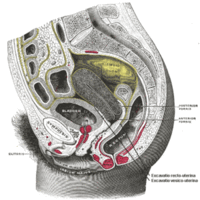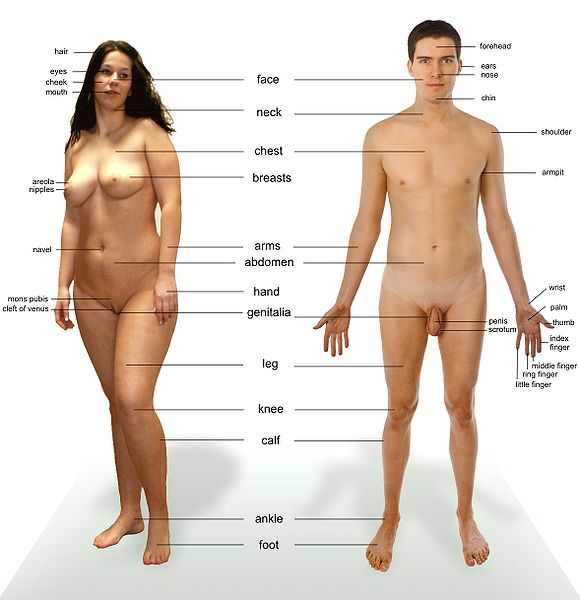Rectocele
In gynecology, a rectocele (/ˈrɛktəsiːl/ REK-tə-seel) or posterior vaginal wall prolapse results when the rectum bulges (herniates) into the vagina. Two common causes of this defect are childbirth and hysterectomy. Rectocele also tends to occur with other forms of pelvic organ prolapse, such as enterocele, sigmoidocele and cystocele.
Although the term often applies to this condition in females, males can also develop it. Rectoceles in men are uncommon, and associated with prostatectomy.
Signs and symptoms
Mild cases may simply produce a sense of pressure or protrusion within the vagina and the occasional feeling that the rectum has not been completely emptied after a bowel movement. Moderate cases may involve difficulty passing stool (because the attempt to evacuate pushes the stool into the rectocele instead of out through the anus), discomfort or pain during evacuation or intercourse, constipation, and a general sensation that something is "falling down" or "falling out" within the pelvis. Severe cases may cause vaginal bleeding, intermittent fecal incontinence, or even the prolapse of the bulge through the mouth of the vagina or rectal prolapse through the anus. Digital evacuation, or, manual pushing, on the posterior wall of the vagina helps to aid in bowel movement in a majority of cases of rectocele. Rectocele can be a cause of symptoms of obstructed defecation.
Causes
Rectoceles result from the weakening of the pelvic floor also called pelvic organ prolapse. Weakened pelvic structures occur as a result of an episiotomy during previous births, even decades later. Other causes of pelvic floor prolapse can be advanced age, multiple vaginal deliveries, and birthing trauma. Birthing trauma includes vacuum delivery, forceps delivery, and perineal tear. In addition, a history of chronic constipation and excessive straining with bowel movements are thought to play a role in rectocele. Multiple gynecological or rectal surgeries can also lead to the weakening of the pelvic floor. Births that involve babies over nine pounds in weight, or rapid births can contribute to the development of rectocele.[medical citation needed]
A hysterectomy or other pelvic surgery can be a cause,[4] as can chronic constipation and straining to pass bowel movements. It is more common in older women than in younger ones; estrogen, which helps to keep the pelvic tissues elastic, decreases after menopause.
- Wikipedia article: Rectocele
These photos are presented for the purposes of identifying various body parts
| Images of Human Body |
|---|
Chat rooms • What links here • Copyright info • Contact information • Category:Root

